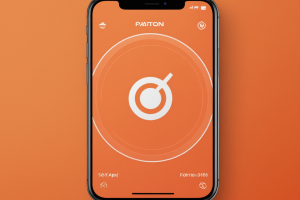SEO-Optimized Article: Best Prompt Techniques for Best LLM Responses
Introduction
The concept of a prompt isn’t new. It’s used across multiple fields including arts, sciences, criminal investigations, and computer programming. Each field uses prompts to initiate a desired response. When dealing with Large Language Models (LLMs), engineers strive to create the perfect prompt to generate the ideal response. This process is called “prompt engineering” – the methodology of constructing texts that can be understood by a generative AI model.
What Is Prompt Engineering?
Prompt engineering isn’t a strict engineering discipline or based on mathematical and scientific fundamentals but rather a practice with a set of guidelines to articulately phrase text to direct an LLM to complete a task. Alternatively, “prompt engineering is the art of communicating with a generative large language model.”[2]
Principle and Guide for Effective Prompts
A recent study by Bsharat et al. presents 26 ordered prompt principles that can be grouped into five main categories:
1. Prompt Structure and Clarity: Include the intended audience in the prompt.
2. Specificity and Information: Use example-based prompting (few-shot prompting).
3. User Interaction and Engagement: Enable the model to request precise details and prerequisites until it possesses sufficient data to deliver the required answer.
4. Content and Language Style: Direct the tone and style of the reply.
5. Complex Tasks and Coding Prompts: Divide intricate duties into a collection of easier actions as prompts.
Elvis Saravia’s prompt engineering manual indicates that a prompt may consist of several components:
1. Instructions: Describe a particular assignment you desire the model to perform.
2. Context: Supply supplementary data or contextual guidance for the model.
3. Input Data: Express the query or input for the model to react to.
4. Output and Style Format: Indicate the type or layout of the result, e.g., JSON, number of lines or sections.
Roles in Prompt Engineering
Prompts relate to functions, and responsibilities inform the interaction between the LLM and the individual. For instance, a system prompt instructs the LLM to adopt a function like an Assistant or Educator. An individual assumes the part of supplying any of the previously mentioned prompt constituents for the LLM to utilize.
OpenAI proposes the following tips when creating prompts:
1. Formulate clear instructions.
2. Offer referential content.
3. Dissect complicated assignments into less difficult subtasks.
4. Permit the model ample opportunity to ‘think’.
Sahoo, Singh, and Saha et al.’s Systematic Survey of Prompt Engineering Methodologies
This research provides a detailed taxonomy of prompt engineering methods, ranging from zero-shot prompting to advanced developments. The study classifies techniques into separate groups.
CO-STAR Prompt Framework
Sheila Teo’s prompt engineering tutorial, which secured Singapore’s GPT-4 prompt engineering contest, introduces the CO-STAR framework. The framework consolidates previous suggestions and recommendations into six straightforward and understandable phrases:
Context: Deliver historical facts and information regarding the undertaking
O: Objective: Outline the duty you expect the LLM to fulfill
S: Style: Determine the compositional style you anticipate from the LLM
T: Tone: Establish the disposition and tone of the reaction
A: Audience: Ascertain the targeted demographic for the response
R: Response: Present the response structure and design
Exploring Various Prompt Types and Tasks
Effective prompts vary depending on the sort of task you intend the LLM to achieve. Some typical tasks involve:
1. Text Summarization
2. Zero and Few Shot Learning
3. Information Extraction
4. Question Answering
5. Text and Image Classification
6. Dialogue
7. Reasoning
8. Code Generation
Conclusion
In this article, we delved into what prompt engineering entails, presented numerous guideline principles and strategies to develop efficient prompts to acquire optimal reactions from LLMs. We examined the CO-STAR prompt framework and supplied instances of how to employ this prompting template. Lastly, we related prompt forms to customary assignments for LLMs and delivered a selection of instructional exercises for every type of job.










